8mm f/3.5 Fisheye Lens Review
This real-world Rokinon 8mm fisheye lens review features sample photos and my opinions of this budget lens that is sold under multiple names (Rokinon, Samyang, Bower, Pro-Optic), all of which are made by Samyang Optics. Rokinon is the most common brand-name for the lens in the US, so I’m going to refer to this lens as the Rokinon 8mm f/3.5 Fisheye Lens. If you see an “8mm f/3.5 fisheye lens” under one of the aforementioned brand names, this is the lens.
Following the reception of the Tamron 17-55mm f/2.8 review I posted, I’ve decided to occasionally post individual reviews of specific photography equipment that is especially useful at Walt Disney World or Disneyland. That Tamron lens is probably the most versatile Disney photography lens, and this one is probably the most FUN lens. Fisheyes lenses are great for Walt Disney World and Disneyland photography.
When I used a crop sensor Nikon DSLR, this was the lens that I used the most at Walt Disney World and Disneyland. I think this lens has a lot great purposes. You can use it for the normal “fisheye effect,” but you can also get in tight spaces and achieve a substantial field of view, you can take self portraits that are of more than just your head, you can take interesting close-up shots, and you can use it as the functional equivalent of an ultra wide angle lens with the appropriate distortion-correcting software. It opens up a world of creative possibilities beyond just the “fisheye look” type of shots.
So what, exactly, are its pros and cons? Let’s start with the cons…
Some people–a lot of people–will tell you that a fisheye is best used in moderation, and that the “gimmick” of the fisheye wears off quickly or becomes tiresome after a few shots. I am not one of those people. While I believe some of the exaggerated distortion shots are overdone, I think a fisheye can be used pretty extensively without wearing out its welcome.
I want to be up front with that so you don’t give my review too much weight; if you don’t like the photos in this review (all of them were taken with the Rokinon 8mm f/3.5 fisheye) or my photos in general, chances are that you won’t be happy with a fisheye lens. It’s a lot like HDR–it’s not for everyone.
Another caveat is that this lens is manual focus for all camera brands. Manual focus is no big deal at all, and is not something to worry about with a fisheye.
While manual focus can be tricky with other lenses, the natural depth of field is so great on a fisheye that you almost never have to focus the lens. I set my focus on 3 feet and rarely ever adjust it. The only time I do adjust is if I’m taking a handheld self-portrait, and then I’ll adjust it to around 1-2 feet.
On the plus side, Rokinon’s cheapest version of this lens is now cheap, meaning that any new version (including this one) will meter with any DSLR, including entry level ones. The price of the lens has also dropped since when I purchased it, so double bonus!
At Walt Disney World and Disneyland, manual focus is actually a plus for this lens, as you don’t have to worry about the lens hunting for focus.
It’s ALWAYS in focus! Seriously, don’t worry about the focus at all. I am really stressing this because I’ve heard this concern (and had it myself before buying) a lot, but it’s a complete non-issue.
Aside from the potential issue with manual focus (which is not a real issue for me, but might be for you), there aren’t many other negatives about this lens. It isn’t all that sharp at f/3.5 (or f/4, which isn’t an aperture listed on the lens but is a possible aperture), but it is sharp at f/5.6 and above. At f/8 to f/11, it’s one of the sharpest lenses in my bag.
I’ve also had some slight issues with minor color fringing, but I don’t tend to notice this much, and this is pretty common with all fisheye lenses.
Now, the pros. There are a lot of them. First and foremost is the price. The Rokinon 8mm f/3.5 Fisheye Lens retails sells for around $200 on Amazon.com, making it one of the greatest bargains in DSLR photography. You might remember that I called the Tamron 17-55mm f/2.8 a great bargain at $500. This is a couple hundred dollars less, and is a GREAT deal.
Compare the Rokinon Fisheye to the Nikon 10.5mm f/2.8GFisheye Lens that sells for $700 on Amazon, the Sigma 10mm f/2.8 Fisheye Lens
that sells for $650 on Amazon, or the Tokina 10-17mm Fisheye Lens
that sells for $670 on Amazon. The Rokinon 8mm Fisheye Lens is less than half the price of ANY of those lenses.
Back when I owned the Nikon D90, I owned the last lens on that list, the Tokina 10-17mm fisheye. Based on my first hand experience, I can say that the Rokinon is better than the Tokina fisheye. The zoom of the Tokina is novel, but it’s totally unnecessary for a fisheye lens. The Rokinon is sharper, and produces better images. At less than HALF the price!
As for the Rokinon’s image quality, I think these images speak for themselves, but just in case they don’t (and I know this is a concern given the odd brand names for this lens), the image quality is spectacular.
The lens is tack sharp at f/8 to f/16, produces great color and contrast, and its 8mm 180 degree field of view is great and allows latitude in centering subjects (and cropping) for a less distorted photo. I really can’t say enough about the quality of the photos this lens produces. I never expected so much from an “off” brand.
Image quality is even great on full frame cameras. The photo immediately above of Spaceship Earth was taken with my Nikon D600 (read my review of that camera).
Although there is a dark border around the photo, as soon as you crop that off, you have a great looking fisheye image. So don’t fret if you plan on upgrading to full frame–this lens will work with that, too.
Since moving up to the Nikon D810, I’ve actually upgraded fisheye lenses to the Rokinon 12mm fisheye lens (read my review of that lens), which is nearly identical to this in terms of optics. The biggest difference is that is the full frame version of this lens…and is more expensive.
The reason I made the upgrade is because the Nikon D810 has such a huge resolution that it’s difficult to use this lens with it. I’m not much into pixel-peeping, but I did notice when photos were blown up to huge sizes, they didn’t look as good with this lens. Wasn’t an issue with my Nikon D600, but is with the Nikon D810. Just something to keep in mind if you’re using a camera with a megapixel count of 36 or above.
One of my favorite things about the lens, and this is another “your mileage may vary” type thing, is the starbursts and sunbursts it produces. At apertures of around f/11 and up, the lens produces a very visually-pleasing 6-point starburst. I really like the way this starburst looks as it “fans” rays of sunlight out.
Other lenses I have produce more points of light in their star/sunbursts (the number of points is determined by aperture blades), and I’m not a fan of these tighter and more numerous rays in the bursts (example). The starbursts produced by this lens, in my opinion, have a more natural and pleasing look. Again, that’s just my opinion–your starburst preferences may vary widely.
Additionally, the Rokinon 8mm fisheye lens offers great build quality since it’s made of metal, not plastic. This is really surprising for a $200 lens, especially when many more expensive lenses are made of plastic. It really seems like there should be more “pros” on this list, but the pros I have mentioned should be really compelling reasons to buy this lens. I can’t adequately articulate why this is an amazing lens, but it is. All of this said, even though this is my single most-used lens, it wouldn’t be the first lens I’d purchase if I were building my camera bag. It is a specialty lens, and if you’re starting out, you might want to go for well-rounded lenses before trying specialty lenses. I happen to love this lens, and I think it’s the perfect “Disney” lens, but it’s certainly not for everyone!
Want to learn more about photography to take great photos in the Disney theme parks and beyond? The best place to start is Tom’s Ultimate Disney Parks Photography Guide, which covers a variety of topics from links to tutorials, tips, and tricks to recommendations for point & shoots, DSLRs, lenses, and more!
Your Thoughts…
Do you own the Rokinon 8mm f/3.5 fisheye? How do you feel it compares to other fisheye lenses? What are your favorite fisheye photography subjects at Walt Disney World or Disneyland? Interested in this lens? Share your thoughts about this wonderful fisheye lens in the comments!
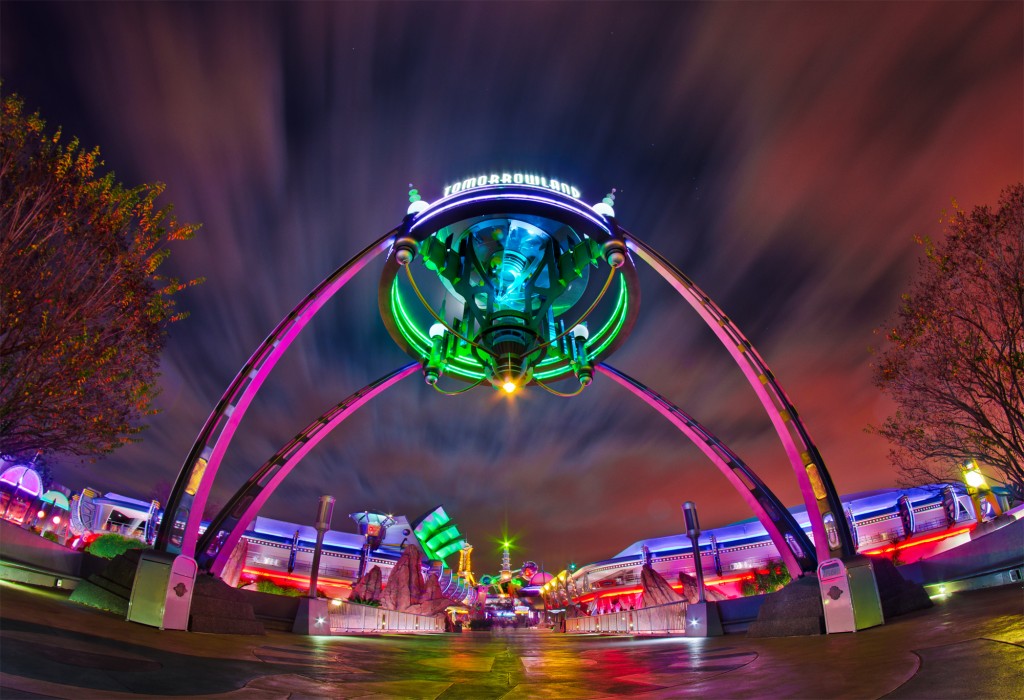
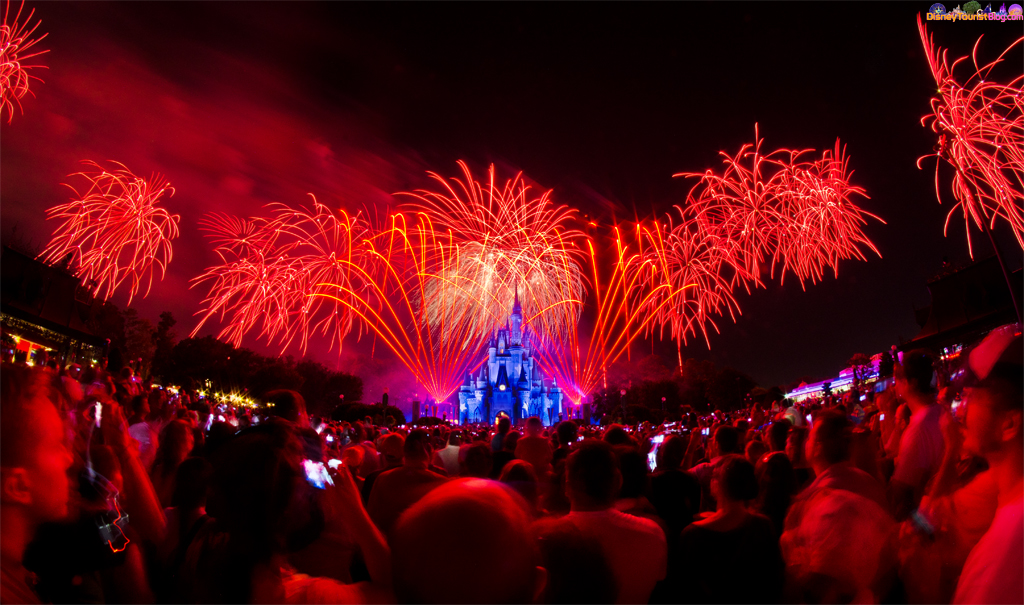
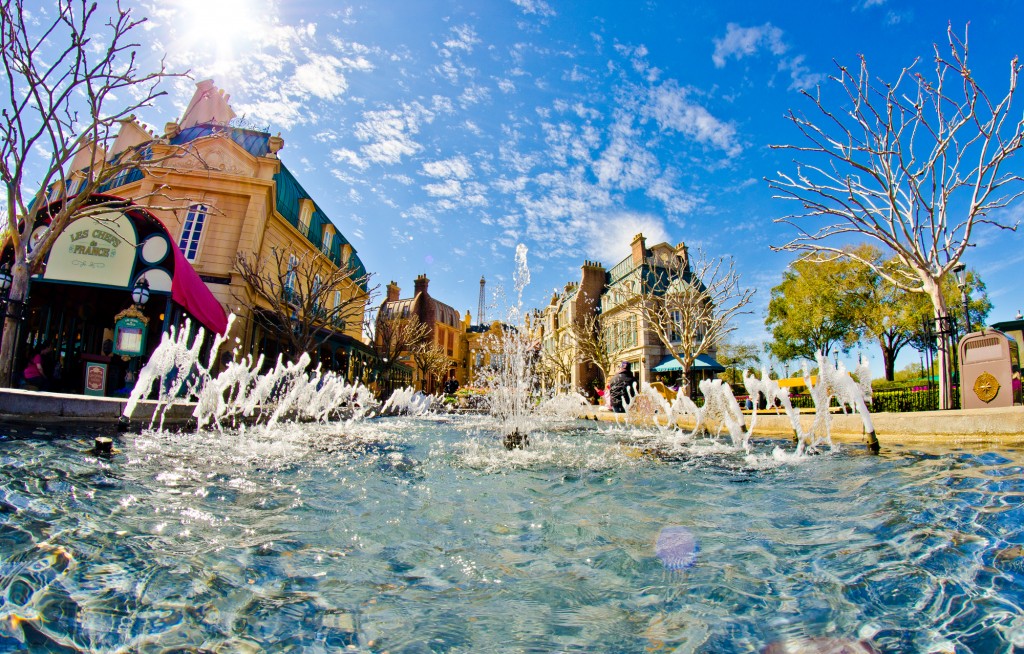
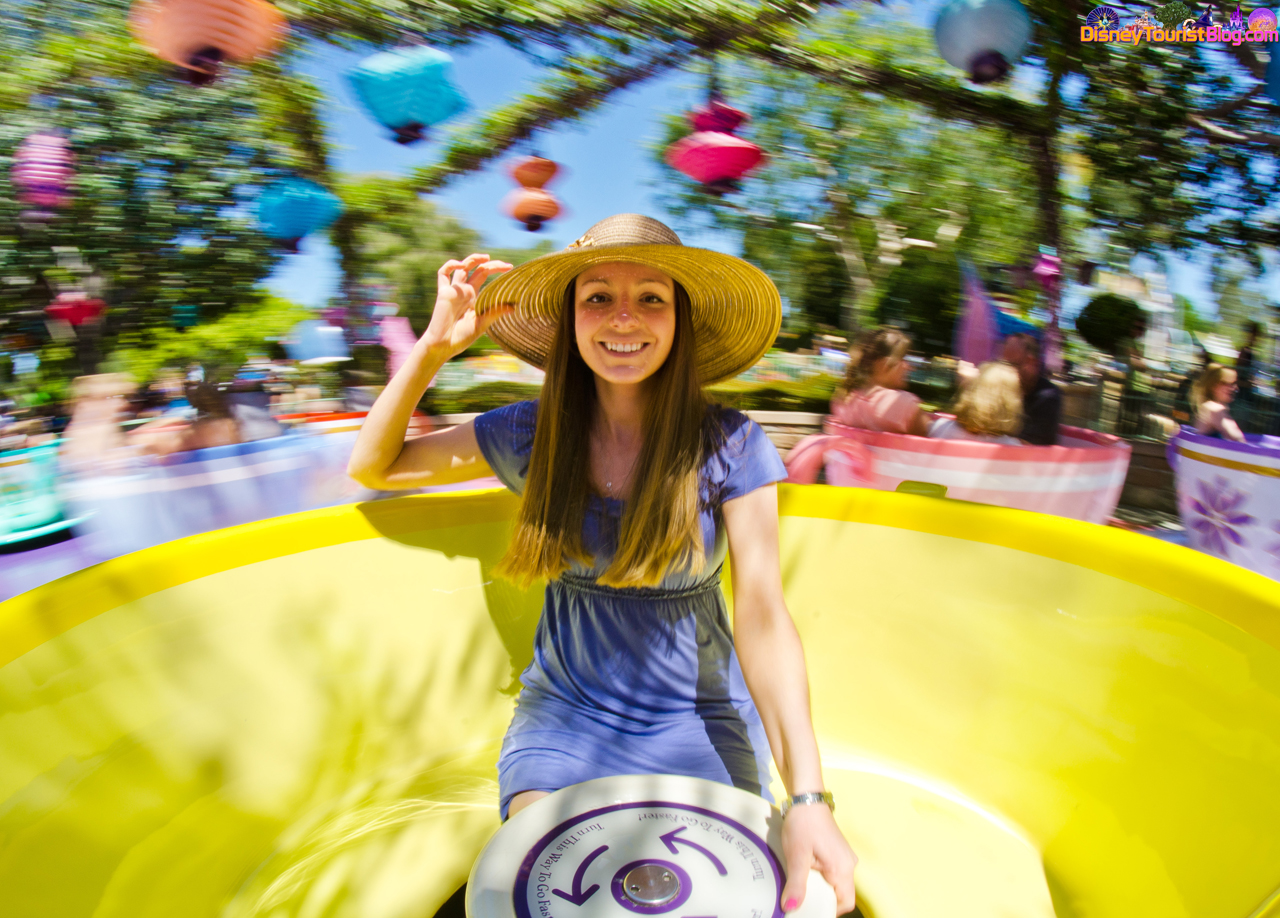
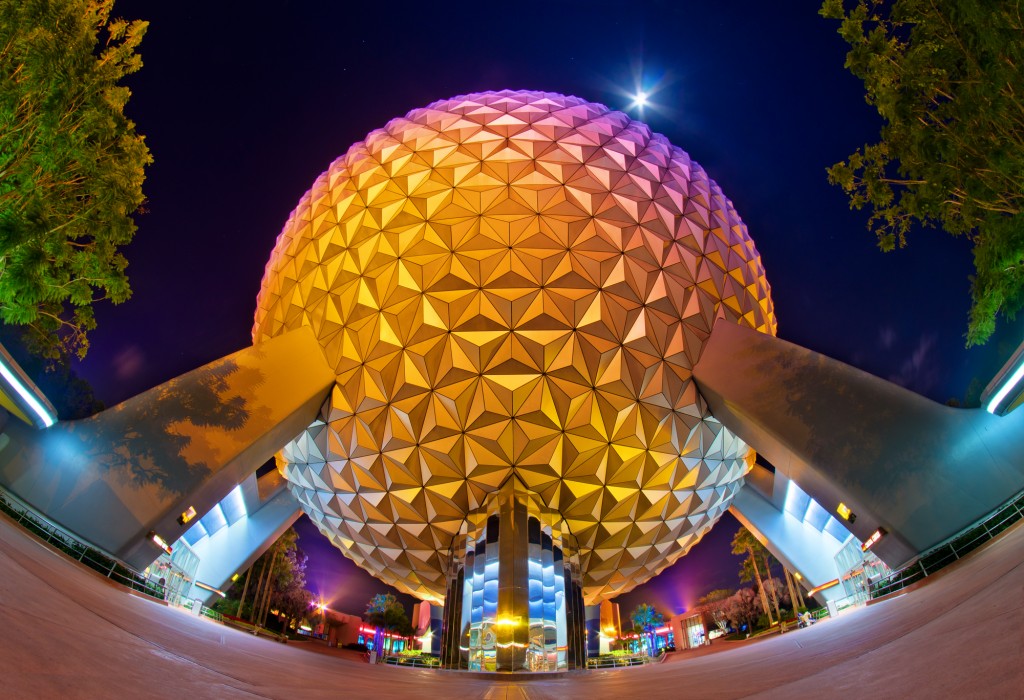
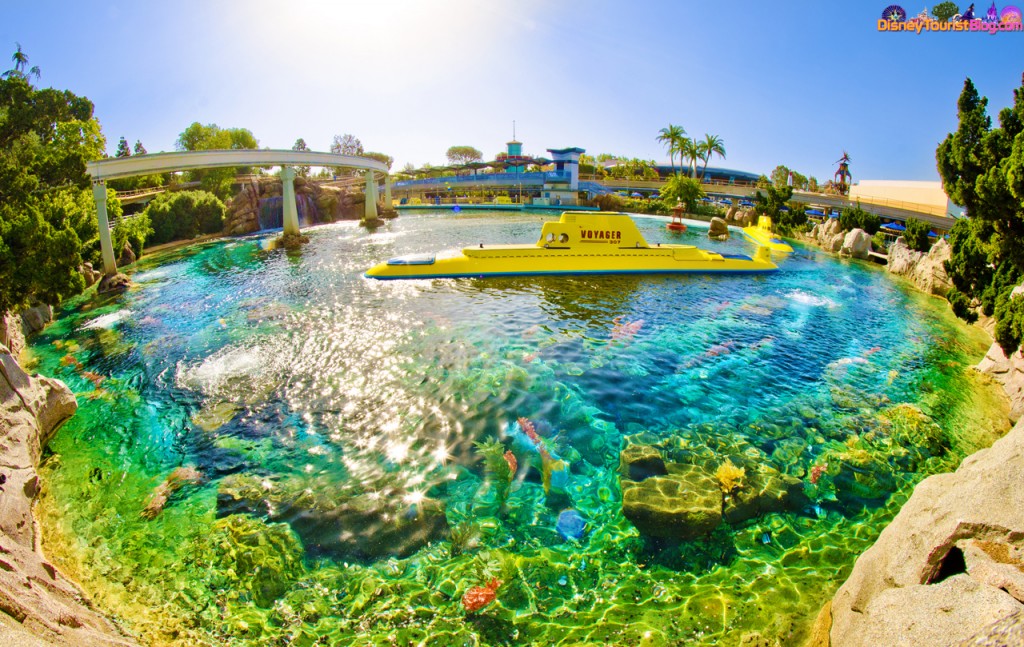
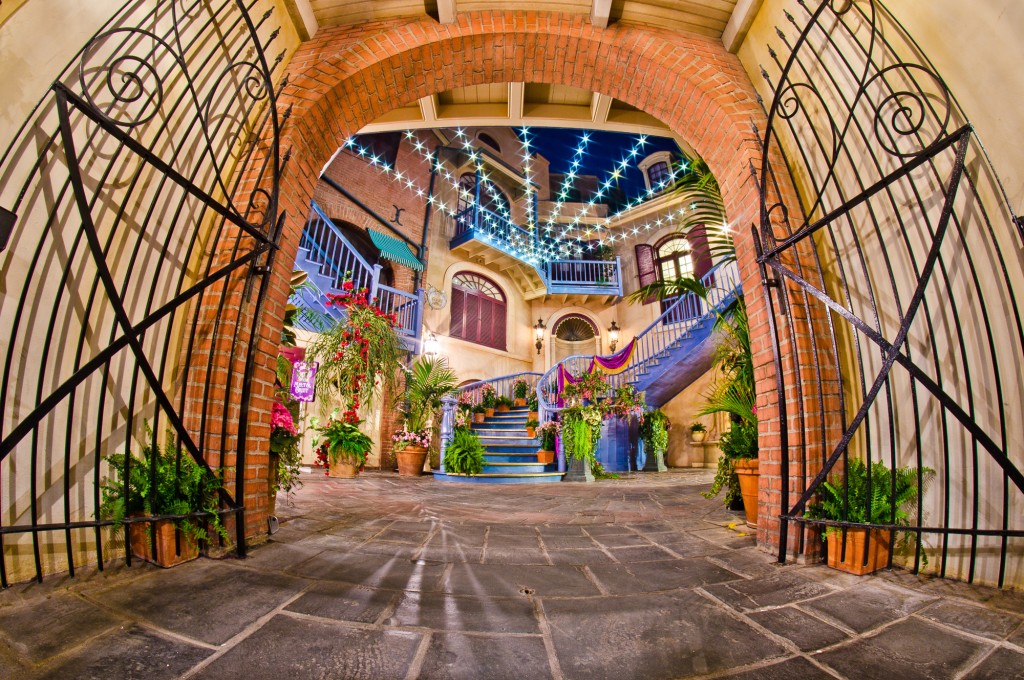

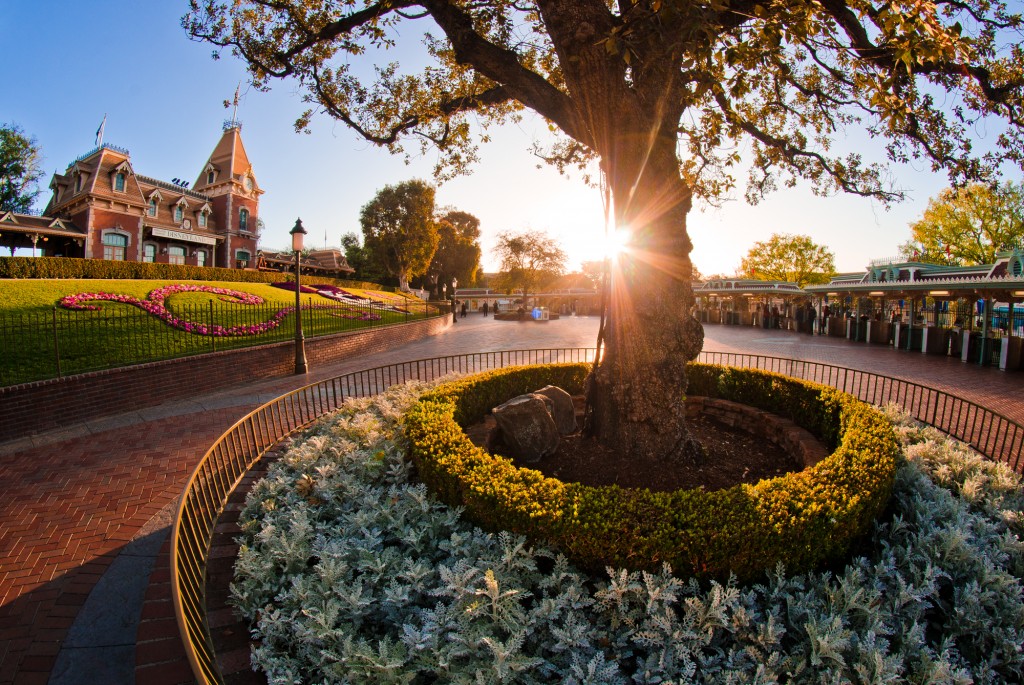
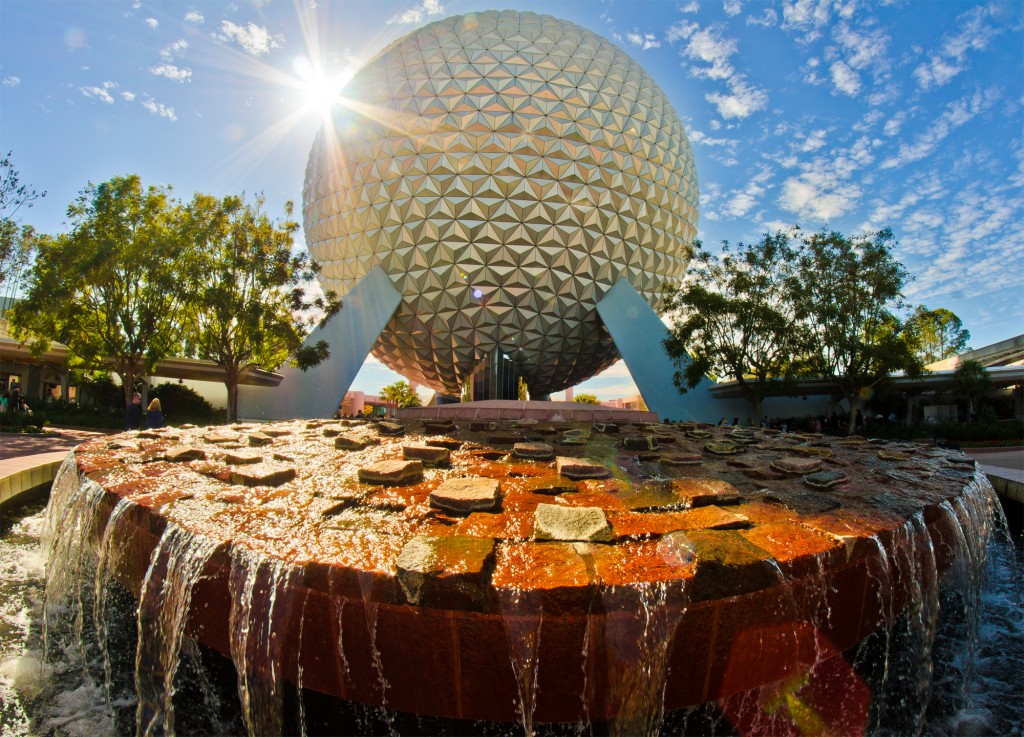
Hi. I hv a Canon 5ds r. In your article, you mentioned to go with the 12mm if the camera has above 36 mp. Now I have a friend with a mint, sigma 15mm 2.8 eg dx, for only 250.00. Which is a better fit fir my camera? Best. William
I love your photos! I have the same Rokinon. I didn’t use it for a couple years. Now, when I try, I switch my D7100 setting to non-cpu lens, maximum aperture 3.5, and adjust as needed. I seem to have to take many shots until the exposure is right. In other words, the camera doesn’t help me as I remember it doing before. Can you point me in the right direction,?
My 3D pictures with this lens are fantastic!
hi
I bought sayang 8mm f3,5 for my canon 60D to do some panoramic photography.
When i am setting the exposure using view finder the photograph is correct but when i am using live view the exposure setting is giving me over exposed images.
Is it a problem with my lens only or in general and how to deal with it.
I don’t know what to do.
Hi, Email address correction.
I have the Bower 8mm ultra wide 3.5 fish eye lens with auto confirmation chip. Can you give me pointers on how to use it with my Nikon D5300 and D7200.
Thank you
Nini
Hi I have the Bower ultra wide 3.5 fish eye lens with the auto confirmation chip and I’m trying to use it with my Nikon D7200. Can you help me with some avice.
Thank You
Nini
Tom, I’m looking at both the 2.8 and the 3,5….your thoughts as to which you prefer…the 3.5 has a 167degree FOV and the 2.8 gives a 180 FOV…I like the thoughts of the 180 but there might be a downside that I’m not aware of…appreciate your input…Bob
I have had this lens for a while, using a Canon 7D-II. I have read some older reviews that claimed that this lens was not to be used with Canon cameras because it would not meter. However, that is not the case with many modern Canon cameras. If a Canon camera has auto-ISO, you can put it in that mode, set the aperture for f/8, and pick whatever shutter speed gives you the ISO you want, down to about 1/4 second with a steady hand and image stabilization. It work great. I just wanted Canon users to know that Tom’s claims for this lens are spot-on, and that it works just fine with auto-ISO Canons.
After reading your review a couple of years ago, I was looking at the FE8M-C, but never pulled the trigger because there were other lenses I wanted more. But when I saw an awesome deal on Amazon yesterday ($179), and after some quick research, I determined that this was, at the very least, a good buy.
But now I’m wondering…what is the difference between the FE8M-C and the HD8M-C? Rokinon’s website didn’t come right out and tell the difference and B&H’s compare tool didn’t help me glean any info either.
Some reviews I read said that the glass is better on the HD, but I’m not sure that they’re not just assuming that by the name. As far as I can tell, it’s just that the HD has the removable lens hood.
So do you (or anybody else) know what the answer is? Either way, I’m pretty happy with the purchase.
Pretty sure the only real difference is the lens hood. I find it very hard to believe that there’s any actual difference in the glass given that the optics are identical. The “HD” in the name is almost certainly just marketing.
Yeah, you are correct. B&H had a question and answer session on Facebook last week, and they confirmed my suspicion that it’s just the removeable lens hood and identical in every other way.
I had been debating on this lens for a really long time and finally decided to pull the trigger. The lens seems awesome, but I am just not getting great pictures yet. Every picture I take comes out looking really really dark. Any suggestions or tips? I have been playing around but haven’t been able to find the solution yet.
Is it the exposure or is there some other issue.
If it is the exposure, either increase the ISO, lower the aperture value, or slow down the shutter speed (or some combination thereof).
Ahh! I was just looking at this lens the other day while doing some research and was debating on weather to get it or not. I used a fisheye lens from school before (the Nikon brand one) and loved the effect it gave. I’ve considered a fisheye lens several times but due to comments about the look getting boring I’ve always decided against it. After reading your review I think I’m defiantly going to invest in this lens! The photos look awesome and it helps add that creative edge to Disney photos I’m always looking for! 🙂
Tom, did you have calibrate the focus ring on this lens? If so, quite lesson would be appreciated. Thanks
Nope, I just set the focus to 3′ and leave it at that.
Good info. So far I have the 35mm 1.8, Tamron 70-300mm USD and I think the Rokinon is my next lens. With these on my soon to be wife’s D5300, I am going to get a D7100 soon, I think I will have all my bases covered.
Great shots, love the fisheye look and will do well for street photography and landscapes when I travel.
A friend got one for his D800 and it vignetted so bad he sold it to me for use with my then d7000. It when into my bag without being used. Now I have the D7100 and it meters the lens in manual mode so I’ll be trying it soon. It will be handy in the cockpit of a small plane ..to be able to shoot the pilot and get the plane and the outside view all in the shot.
Love the photos here and what I’ve seen in searches.
In my apartment I shoot straight ahead and see down the hall that’s almost 90 degrees to my right and the entrance door 90 degrees to my left. Like …it doesn’t seem to have a DX factor. eg. my 35mm 1.8 generates a photo like a 50mm on a full frame camera but the Rokinon doesn’t seem to behave that way and I don’t understand that. To me it acts like a 6mm. If the darn thing shot any wider I’d be seeing behind me. What’s up with that?
For your night shots, did you need to use a tripod?
So if I am using a D3200 but am always shooting on manual mode, do I need the Auto Exposure chip version? Or can I meter it by myself through the camera like with any other shot I’m taking?
These are amazing shots! I have a Sigma 10-20mm lens, which I love, but I’m seriously considering getting one of these too because it looks like a fun lens to have.
I know I’m late to the party, but I do have a question:
Tom,
I have seen a lot of your photos that do not look like they were taken with a fisheye, but the EXIF data indicates that you used an 8mm lens, so I assume it was the Rokinon. So you either cropped in tighter or used “appropriate distortion-correcting software”. I’ve wondered if there is lack of sharpness (akin to a stretching of pixels for lack of a better term) when using software versus using a regular wide angle lens. Any thoughts?
Yep, I either do so with the free transform tool in Photoshop, or its Adaptive Wide Angle tool (which works very well). The downside is a loss in sharpness. Sometimes it’s not at all noticeable, sometimes it is very noticeable. It all depends upon how heavily “corrected” it is. Hope that helps!
Thanks for the review. Nice photos (my fav is the teacup ride).
Thanks for pointing out the differences in AE between D90 and the D7000. I didn’t know that they had changed that when the updated. I guess that makes the D7000/D7100 a kinda mashup of the D300 and D90.
So the Rokinon is equivalent to a Nikon AI-P/AI-S, or other type of MF lens?